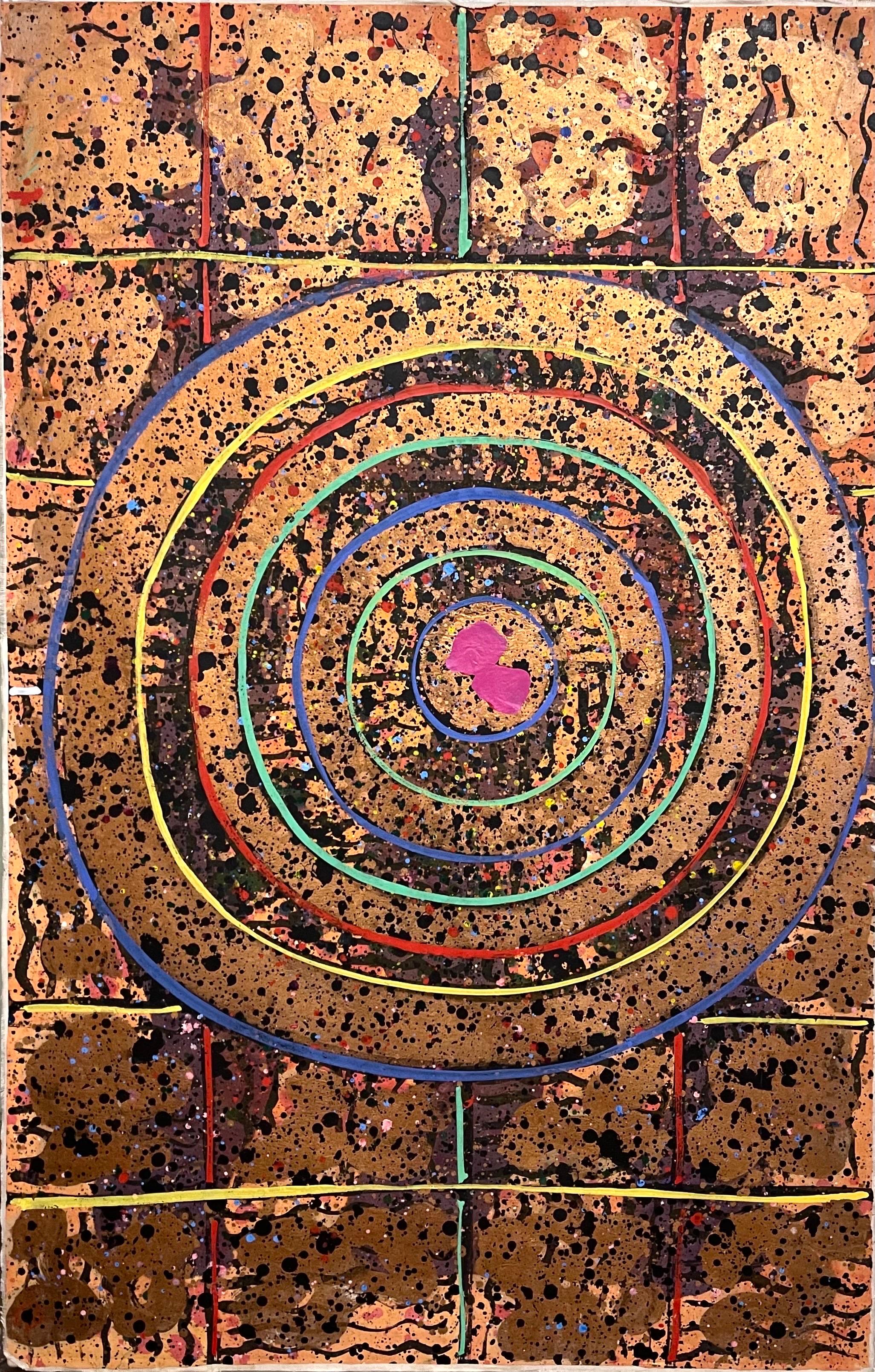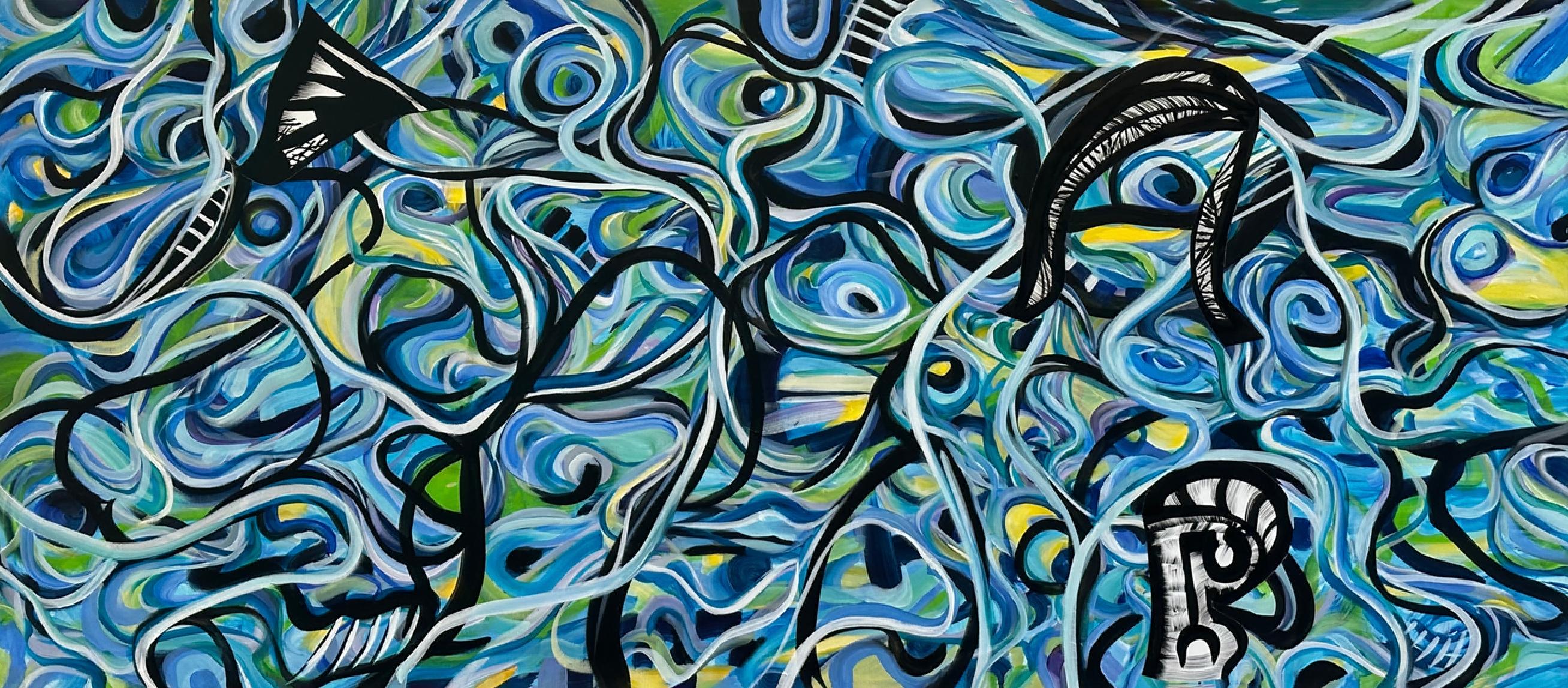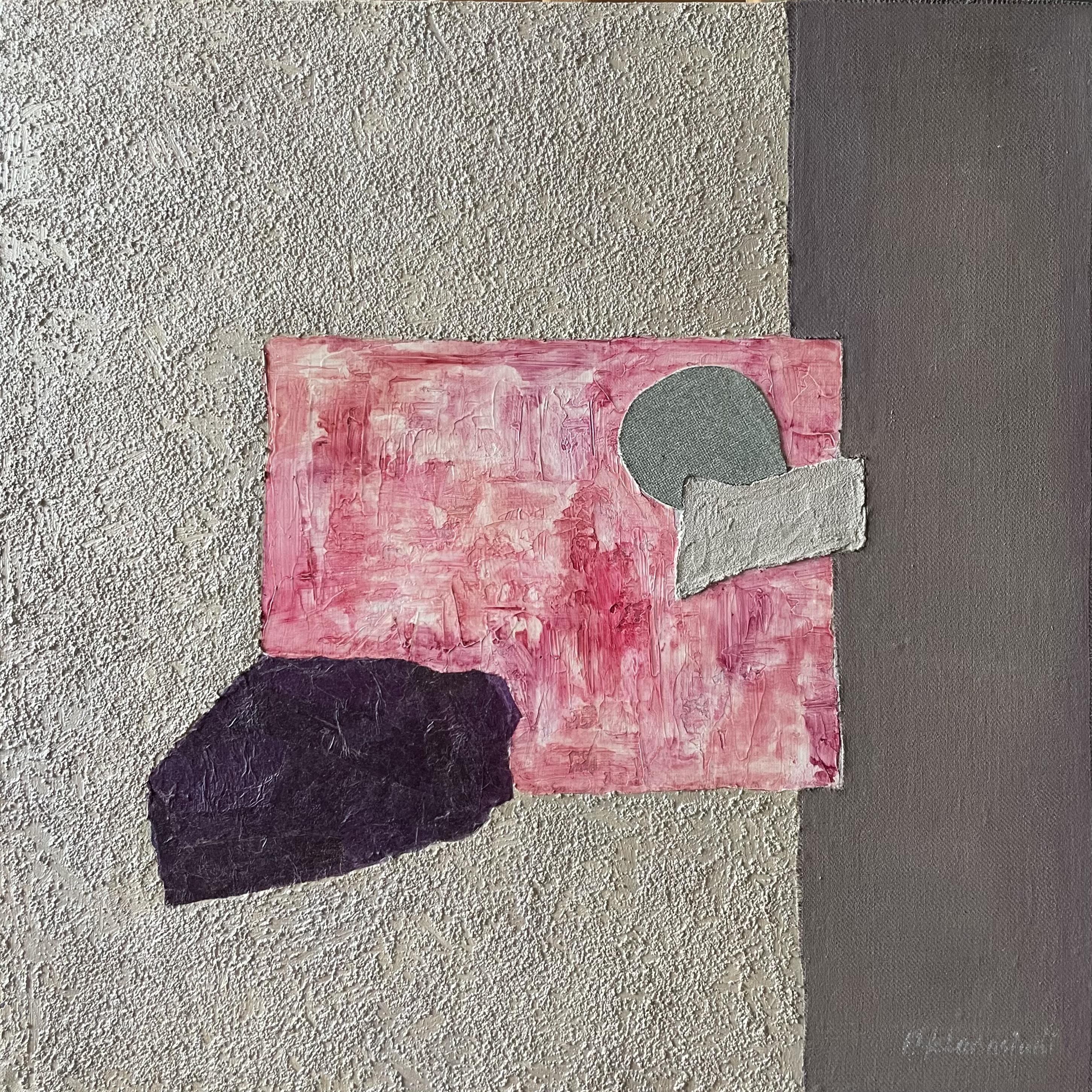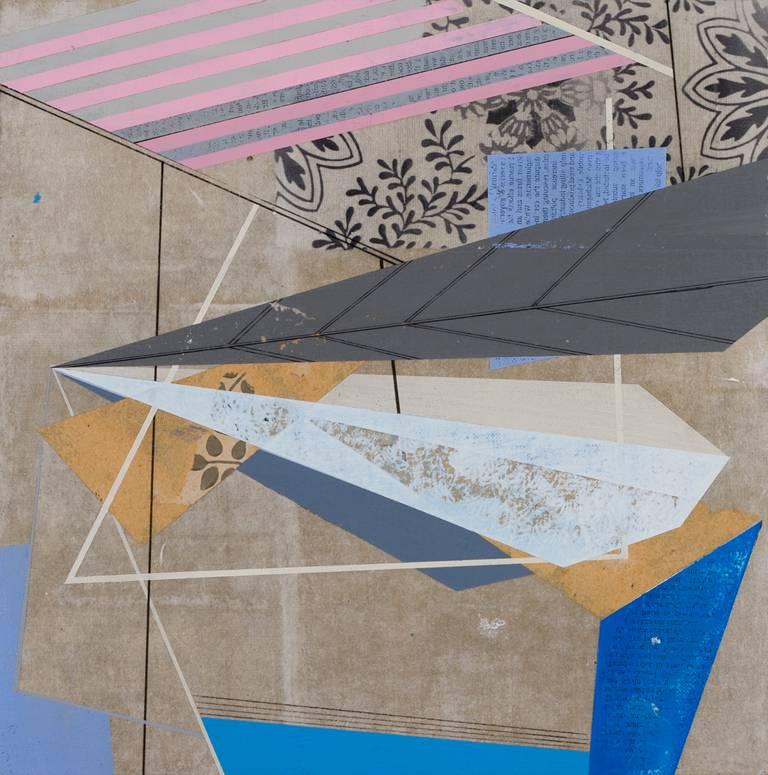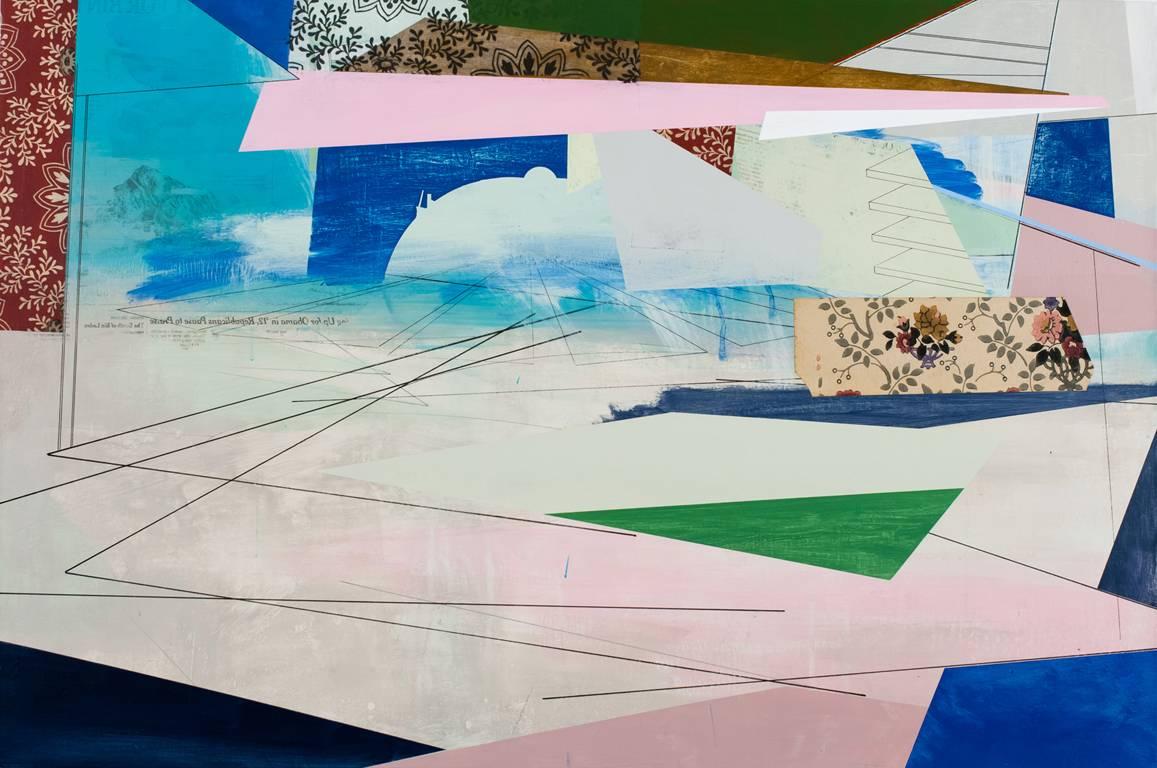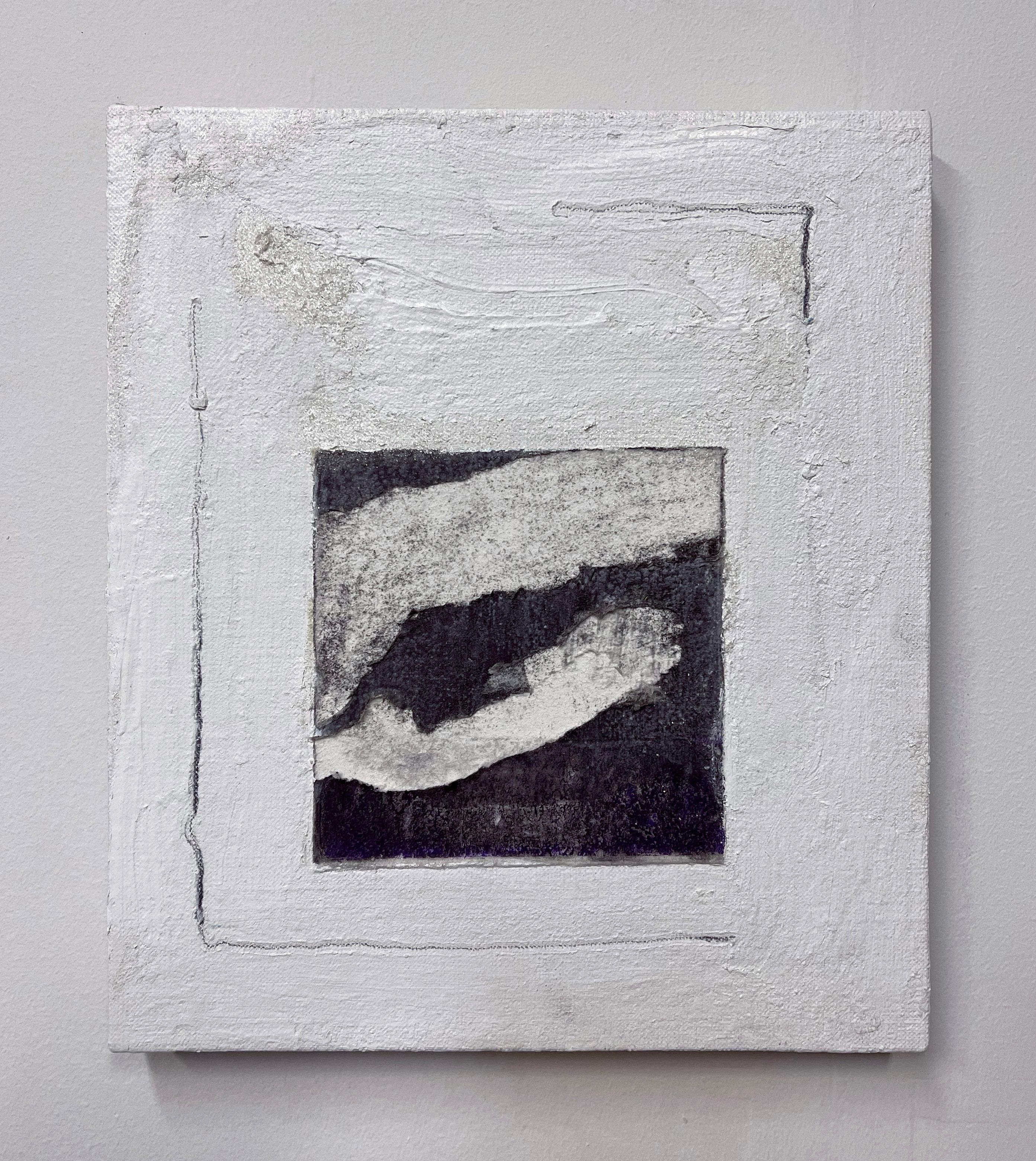David Hare"Erotic #1 (Cronus Sex)" Acrylic and Paper Collage on Linen Canvas Abstract1970
1970
About the Item
- Creator:David Hare (1917-1992, American)
- Creation Year:1970
- Dimensions:Height: 68 in (172.72 cm)Width: 51 in (129.54 cm)
- More Editions & Sizes:UniquePrice: $75,000
- Medium:
- Movement & Style:
- Period:
- Framing:Framing Options Available
- Condition:
- Gallery Location:New York, NY
- Reference Number:1stDibs: LU1841214419112
David Hare
David Hare, a surrealist and Abstract Expressionist sculptor and photographer, was born in New York City on March 10, 1917. From 1936–37, he studied biology and chemistry at Bard College in Annandale-on-Hudson, New York. Hare had no formal training in art but began experimenting. He took up photography in the 1930s and by the end of the decade was working in color. The Walker Galleries in New York exhibited his photographs in 1939. From 1941–44, Hare founded and edited the surrealist magazine VVV with André Breton, Marcel Duchamp and Max Ernst. Peggy Guggenheim presented solo shows of Hare's work in her The Art of This Century Gallery from 1944–47. In 1948, he was a founding member, together with William Baziotes, Robert Motherwell and Mark Rothko, of The Subjects of the Artist school in New York and Hare, became friendly with Jean-Paul Sarte. Hare died on December 21, 1992, in Jackson.
- ShippingRetrieving quote...Ships From: New York, NY
- Return PolicyA return for this item may be initiated within 3 days of delivery.
- "Cronus Elephant" Abstract Composition Acrylic on Linen by David HareBy David HareLocated in New York, NYDavid Hare Cronus Elephant, 1975 Acrylic on linen 82 x 60 inches “Freedom is what we want,” David Hare boldly stated in 1965, but then he added the caveat, “and what we are most afr...Category
1970s Abstract Abstract Paintings
MaterialsLinen, Acrylic
- "Cronus Descending" Acrylic on Linen Abstract Surrealist Painting by David HareBy David HareLocated in New York, NYDavid Hare Cronus Descending, 1971 Acrylic on linen 64 x 46 inches “Freedom is what we want,” David Hare boldly stated in 1965, but then he added the caveat, “and what we are most ...Category
1970s Abstract Abstract Paintings
MaterialsLinen, Acrylic
- "Cronus Hunting" Acrylic and Paper Collage on Linen Abstract CompositionBy David HareLocated in New York, NYDavid Hare Cronus Hunting, 1967 Acrylic and paper collage on linen 68 x 53 inches “Freedom is what we want,” David Hare boldly stated in 1965, but then he added the caveat, “and wha...Category
1960s Abstract Paintings
MaterialsLinen, Paper, Acrylic
- "Cronus Asleep in the Cave" Mixed Media Work on Paper by David HareBy David HareLocated in New York, NYDavid Hare Cronus Asleep in the Cave, 1971 Acrylic, ink wash, graphite, paper collage on paper on board 26 x 35 inches “Freedom is what we want,” David Hare boldly stated in 1965, b...Category
1970s Abstract Abstract Paintings
MaterialsAcrylic, Paper, Ink, Graphite
- "Cronus Dining" Mixed Media On Paper Yellow and White Composition on PaperBy David HareLocated in New York, NYDavid Hare Cronus Dining, 1968 Graphite, acrylic, paper collage on board 44 x 34 inches “Freedom is what we want,” David Hare boldly stated in 1965, but then he added the caveat, “and what we are most afraid of.” No one could accuse David Hare of possessing such fear. Blithely unconcerned with the critics’ judgments, Hare flitted through most of the major art developments of the mid-twentieth century in the United States. He changed mediums several times; just when his fame as a sculptor had reached its apogee about 1960, he switched over to painting. Yet he remained attached to surrealism long after it had fallen out of official favor. “I can’t change what I do in order to fit what would make me popular,” he said. “Not because of moral reasons, but just because I can’t do it; I’m not interested in it.” Hare was born in New York City in 1917; his family was both wealthy and familiar with the world of modern art. Meredith (1870-1932), his father, was a prominent corporate attorney. His mother, Elizabeth Sage Goodwin (1878-1948) was an art collector, a financial backer of the 1913 Armory Show, and a friend of artists such as Constantin Brancusi, Walt Kuhn, and Marcel Duchamp. In the 1920s, the entire family moved to Santa Fe, New Mexico and later to Colorado Springs, in the hope that the change in altitude and climate would help to heal Meredith’s tuberculosis. In Colorado Springs, Elizabeth founded the Fountain Valley School where David attended high school after his father died in 1932. In the western United States, Hare developed a fascination for kachina dolls and other aspects of Native American culture that would become a recurring source of inspiration in his career. After high school, Hare briefly attended Bard College (1936-37) in Annandale-on-Hudson. At a loss as to what to do next, he parlayed his mother’s contacts into opening a commercial photography studio and began dabbling in color photography, still a rarity at the time [Kodachrome was introduced in 1935]. At age 22, Hare had his first solo exhibition at Walker Gallery in New York City; his 30 color photographs included one of President Franklin Roosevelt. As a photographer, Hare experimented with an automatist technique called “heatage” (or “melted negatives”) in which he heated the negative in order to distort the image. Hare described them as “antagonisms of matter.” The final products were usually abstractions tending towards surrealism and similar to processes used by Man Ray, Raoul Ubac, and Wolfgang Paalen. In 1940, Hare moved to Roxbury, CT, where he fraternized with neighboring artists such as Alexander Calder and Arshile Gorky, as well as Yves Tanguy who was married to Hare’s cousin Kay Sage, and the art dealer Julian Levy. The same year, Hare received a commission from the American Museum of Natural History to document the Pueblo Indians. He traveled to Santa Fe and, for several months, he took portrait photographs of members of the Hopi, Navajo, and Zuni tribes that were published in book form in 1941. World War II turned Hare’s life upside down. He became a conduit in the exchange of artistic and intellectual ideas between U.S. artists and the surrealist émigrés fleeing Europe. In 1942, Hare befriended Andre Breton, the principal theorist of surrealism. When Breton wanted to publish a magazine to promote the movement in the United States, he could not serve as an editor because he was a foreign national. Instead, Breton selected Hare to edit the journal, entitled VVV [shorth for “Victory, Victory, Victory”], which ran for four issues (the second and third issues were printed as a single volume) from June 1942 to February 1944. Each edition of VVV focused on “poetry, plastic arts, anthropology, sociology, (and) psychology,” and was extensively illustrated by surrealist artists including Giorgio de Chirico, Roberto Matta, and Yves Tanguy; Max Ernst and Marcel Duchamp served as editorial advisors. At the suggestion of Jacqueline Lamba...Category
1960s Abstract Abstract Paintings
MaterialsPaper, Acrylic, Graphite
- "Black Whole, " Jay Rosenblum, Color Field Abstract with StripesBy Jay RosenblumLocated in New York, NYJay Rosenblum Black Whole Signed and titled on the reverse Acrylic on canvas 18 x 32 inches Jay Rosenblum experimented with different versions of the "Visual Stripe motif" for more ...Category
1970s Abstract Abstract Paintings
MaterialsCanvas, Acrylic
- Chinese American Abstract Expressionist Zen Space Painting WangMing Color SchoolLocated in Surfside, FLWang Ming "Enter the World of Infinity" Acrylic paint on Japon paper mounted on canvas Dimensions: H: 39 inches: W: 25 inches WANG MING WANG Artist Ming Wang, born November 4, 1921, died peacefully on Sunday, June 26, 2016 in Bethesda. Ming Wang was born in Tianjin, China and was a pilot in Chinese Nationalist Air Force during WWII. Artist Wang Ming's journey began in the 1940s. As he worked as an air traffic controller in Taiwan, he became interested in the beauty of the sky. He was a young man then, having fled from Japanese-occupied China in 1939 at age 18. He came to the US for further military training where he met his first wife, the late Suen Chin. In 1949, Wang went Taiwan to escape the Communist takeover of China. He rejoined his wife and young son in Washington DC in 1951. To support a growing family, Wang founded the National Art and Frame shop in Washington DC. He studied art independently and developed his unique artistic style melding modern art with traditional Chinese calligraphy. His paintings, done with a mixture of inks and acrylics on fine paper, are a happy marriage of traditional Chinese disciplines with Western art as it has been handled by Joan Miro and Paul Klee. His works are minimalist and abstract, marked with good design and extremely sensitive use of color. The influence of 1950s American art and abstract expressionism is also clear in his work, and he exhibited with such Washington Color School luminaries as Kenneth Noland and Gene Davis in the 1960s. He later taught calligraphy at George Washington University. Years before the Hubble Telescope began broadcasting images of rainbow clouds and blood red stars, Ming used art to convey what he imagined space to be. His work captured the attention of James Dean, the National Air and Space Museum's first art collector, who purchased two of his pieces. In the 1960's and 1970's, Wang was represented by the Franz Bader Gallery in Washington DC. 1980: Brooklyn Museum, Brooklyn, New York American Drawing in Black & White: 1970-1980, by curator Gene Baro. “The visitors are invited to enjoy the rich variety of marks and means used in attacking subjects that range from meticulous representational rendering to extemporaneous gesture.” Included among many other artists, were Anni Albers, Jasper Johns, Willem De Kooning, Robert Rauschenberg, Jack Tworkov, Robert Motherwell and Andy Warhol. 1982: The Washington Post, by Jo Ann Lewis “His show at the Marvin Center at George Washington University, where he teaches calligraphy, should help clarify the unique nature of his art . ... ‘Independent Reality,’ in which dramatic curves dance across an opened scroll, taking on a life of their own-in any language. The show is filled with the artist’s very special of visual poetry.” He was included in the exhibition American Drawing in Black & White: 1970-1980, by curator Gene Baro at the Brooklyn Museum, Brooklyn, New York. Included among many other artists, were Anni Albers, Jasper Johns, Willem De Kooning, Robert Rauschenberg, Jack Tworkov, Robert Motherwell and Andy Warhol. Wang Ming was also included in the show Asian Traditions/Modern Expressions Asian American Artists and Abstraction, 1945 – 1970 at the Jane Voorhees Zimmerli Art Museum Rutgers, The State University of New Jersey New Brunswick. The senior curator Jeffrey Wechsler reviewed each artist for this traveling group exhibition, including C. C. Wang, Chen chi, Kenzo Okada...Category
1980s Abstract Expressionist Abstract Paintings
MaterialsLinen, Acrylic, Archival Paper
- Loopy IIBy Naomie KremerLocated in New Orleans, LAIn this new body of work, Kremer continues to explore and celebrate the physical experience of being, juggling eros, flora, fauna, and saga in abstract relationships that continue to...Category
2010s Abstract Abstract Paintings
MaterialsLinen, Oil, Acrylic, Photographic Paper
- Pink imageLocated in Zofingen, AGSquare composition in the genre of conceptualism. The mixed media painting has a contrast and "romantic" color scheme - pink, pearl, gray and violet. Acrylic paint, texture paste wit...Category
2010s Abstract Geometric Mixed Media
MaterialsCoffee, Acrylic, Linen, Paper, Watercolor, Canvas, Cotton, Lacquer
- Faith's HouseBy David CollinsLocated in Dallas, TXDavid Collins has an ongoing interest in space and memory. Many of Collins’ memories relate to his family’s history in inventing Cold War era technology. Personal recollections of sp...Category
21st Century and Contemporary Abstract Paintings
MaterialsLinen, Wood, Paper, Acrylic
- In Plain SightBy David CollinsLocated in Dallas, TXDavid Collins has an ongoing interest in space and memory. Many of Collins’ memories relate to his family’s history in inventing Cold War era technology. Personal recollections of sp...Category
2010s Abstract Paintings
MaterialsLinen, Silk, Paper, Acrylic
- Site 009, abstract paintingLocated in New York, NYAcrylic graphite, mica, paper on linen.Category
2010s Abstract Abstract Paintings
MaterialsPaper, Graphite, Mica, Acrylic, Linen
